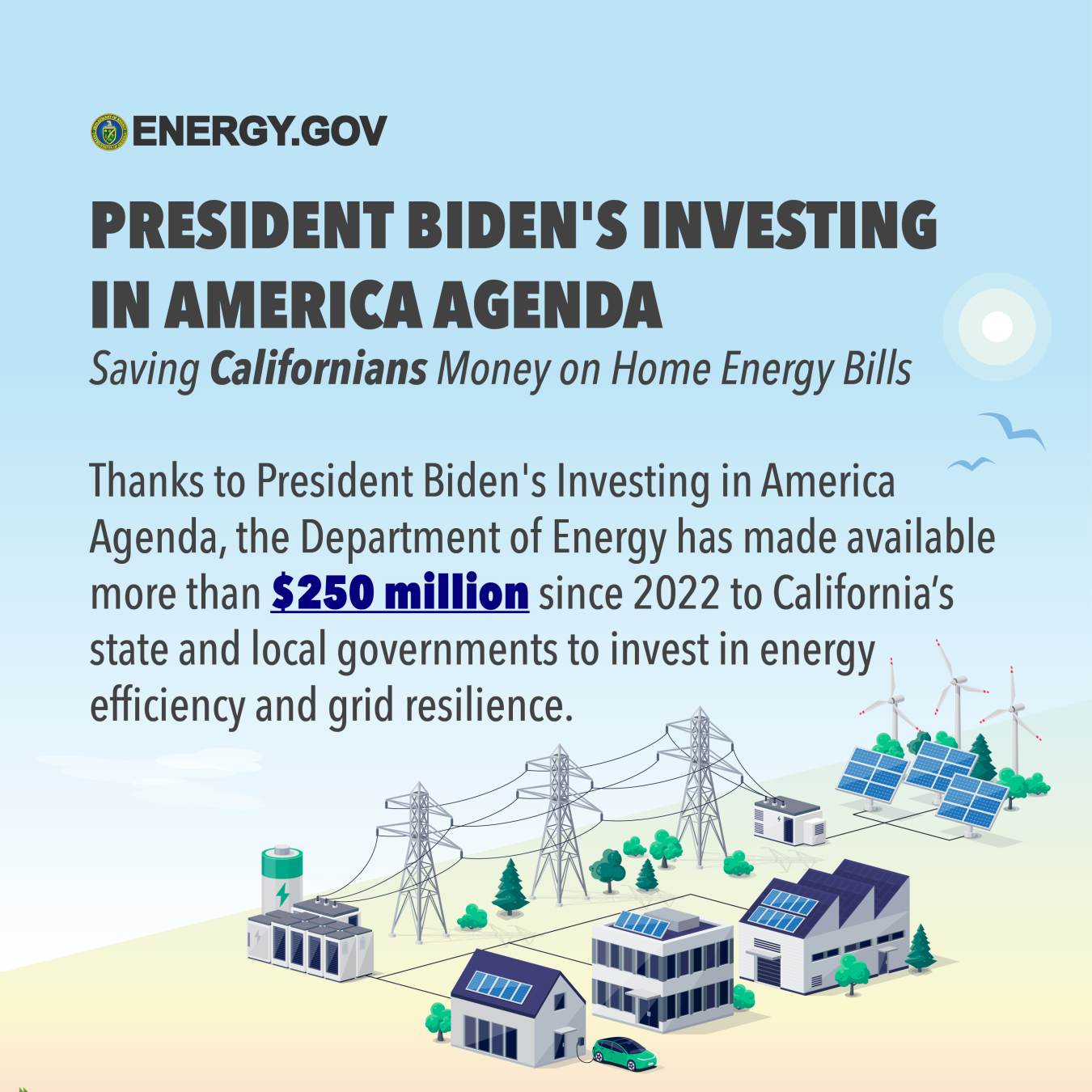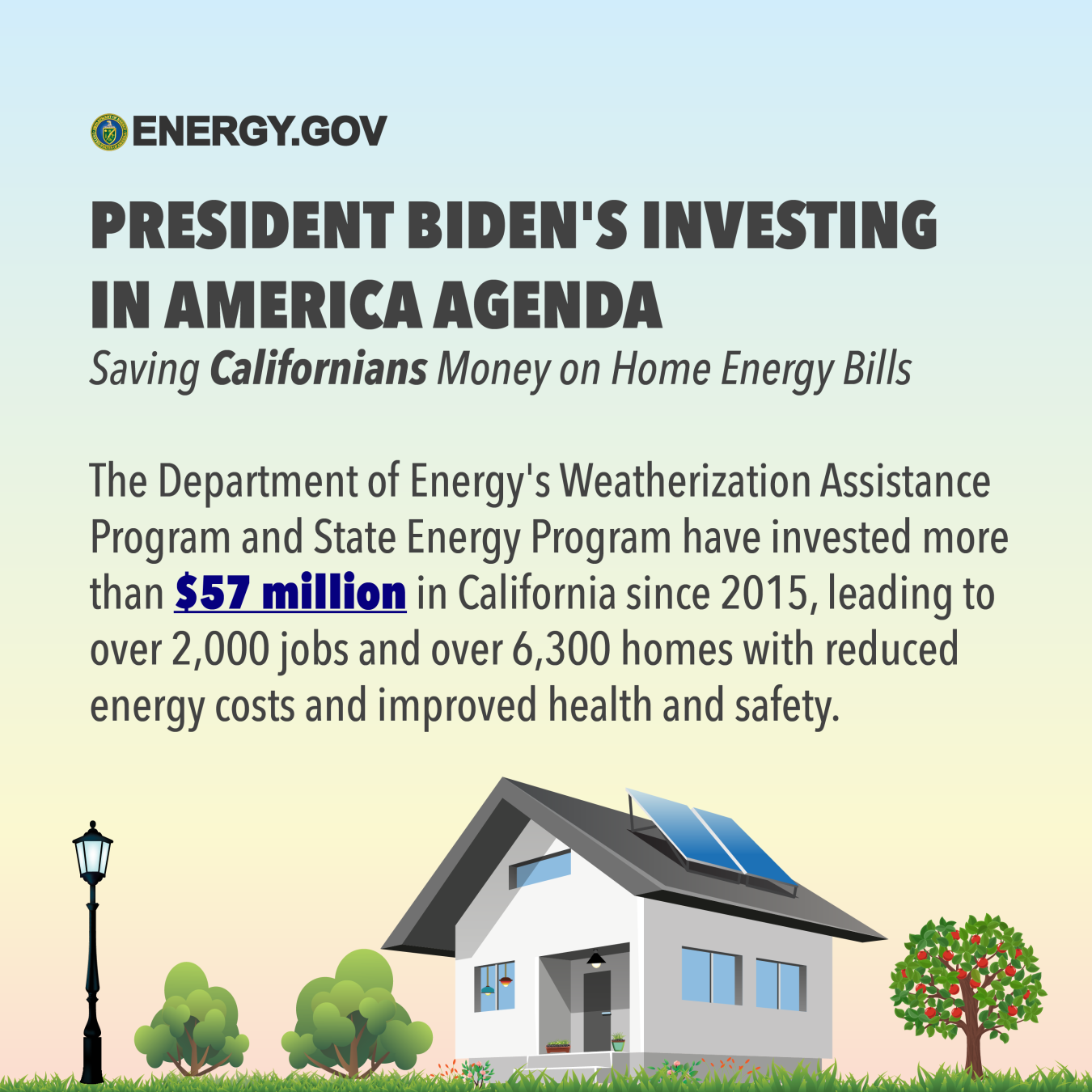(Los Angeles and Pendleton areas)
U.S. Secretary of Energy Jennifer Granholm to visit Southern California
From June 8 through June 9, 2023, U.S. Secretary of Energy Jennifer M. Granholm visits California to highlight the Biden-Harris Administration’s commitment to expanding the nation’s clean energy workforce and deploying every tool to deliver cleaner, cheaper energy to American families – including nuclear energy, the nation’s largest current source of carbon-free electricity.
Strengthening California’s Economy

Energy Jobs
In 2021, the largest energy employer sector in CA was energy efficiency with 298,788 jobs. Solar was also a major employer, with almost 115,000 workers, which represented two thirds of the electric power generation workforce.
In San Diego County, over 80% of the electric power generation workforce was in wind, solar, and hydroelectric, almost 30,000 workers were employed in energy efficiency. In Los Angeles County, there are over 12,000 solar and wind generation workers, over 60% of the generation workforce, and an additional 60,000 energy efficiency workers.
The Inflation Reduction Act will expand clean energy workforce opportunities, bringing an estimated $21.2 billion of investment in large-scale clean power generation and storage to California between now and 2030.
Clean Energy Investment
Currently, California has over 28 GW of solar, wind, and storage capacity, making it the second largest generator of renewable electricity in the nation. There is almost 14 GW of additional planned clean energy capacity in the works in Southern California.
IRA tax credits that encourage investment in wind and solar will help reduce energy costs, as the costs of solar and wind power are projected to drop by 24% and 35%, respectively, over the next 30 years in southern California. Residential rooftop solar is projected to get 60% cheaper by 2050.
Since the start of the Biden Administration, we have tracked more than $100 billion in new battery supply chain investment announcements, including over $4 billion just in Southern California.
In the same period, we have tracked more than $5 billion in new solar manufacturing investment announcements, including an additional 2.2 GW per year of solar modules in California.
Clean Transportation
California has over 40,000 alternative fueling stations already, which is highest of any state by a factor of four. The state will also receive over $80 million from the Bipartisan Infrastructure Law to further build out its electric vehicle charging infrastructure.
California also has the highest total EV sales in the country, with over 1.1 million EVs registered in CA in 2022. Drivers switching from a gasoline-powered sedan to an EV could save over $1200 per year. For many, the Inflation Reduction Act is making it easier and cheaper to purchase an electric vehicle, with upfront discounts up to $7,500 for new EVs and up to $4,000 for used EVs, helping middle-class Americans skip the gas pump and save on fuel costs.

Investing In California’s Communities
Thanks to funding from the Bipartisan Infrastructure Law and the Inflation Reduction Act, the U.S. Department of Energy has made available more than $250 million since 2022 to California’s state and local governments to invest in energy efficiency and grid resilience.
San Diego State University has been named an Industrial Assessment Center, receiving $1.4 million from the Bipartisan Infrastructure Law to help small- and medium-sized manufacturers save energy, improve productivity, and reduce waste by providing no-cost technical assessments.
The University of California San Diego also received $11 million to improve solar panel and battery recycling processes, and local company Smartville received almost $6 million to develop and demonstrate stationary energy storage with used EV batteries.
Saving Californians Money on Home Energy Bills
Thanks to the Inflation Reduction Act, California will receive over $582 million to implement a Home Energy Rebate program in the state. Low-income households in San Diego County could save an average of 18% on their home energy bills when they upgrade their appliances and improve energy efficiency through this program.
Upgrading appliances and improving home energy efficiency could save a total of over 14,000 GWh of energy in California.
DOE’s Weatherization Assistance Program and State Energy Program have invested more than $57 million in California since 2015, leading to over 2,000 jobs and over 6,300 homes with reduced energy costs and improved health and safety.
Prioritizing California’s Underserved Communities
The Biden Administration has committed to advancing equity for all communities, including through the Justice40 Initiative, which aims to ensure Federal agencies deliver at least 40% of the overall benefits of climate, clean energy, affordable and sustainable housing, clean water, and other investments to disadvantaged communities. DOE has more than 140 programs covered by this initiative.
In Bakersfield, CA, communities are partnering with DOE through the Communities LEAP program to address energy and economic development challenges by mitigating escalating energy costs in vulnerable parts of the county.
The City of San Diego partnered with DOE through the Solar Energy Innovation Network to maximize the potential for solar energy to increase the city’s resilience. These activities informed the development of a broader roadmap for clean energy technology deployment that supported the city’s targets.
For current DOE funding opportunities, visit: www.energy.gov/infrastructure